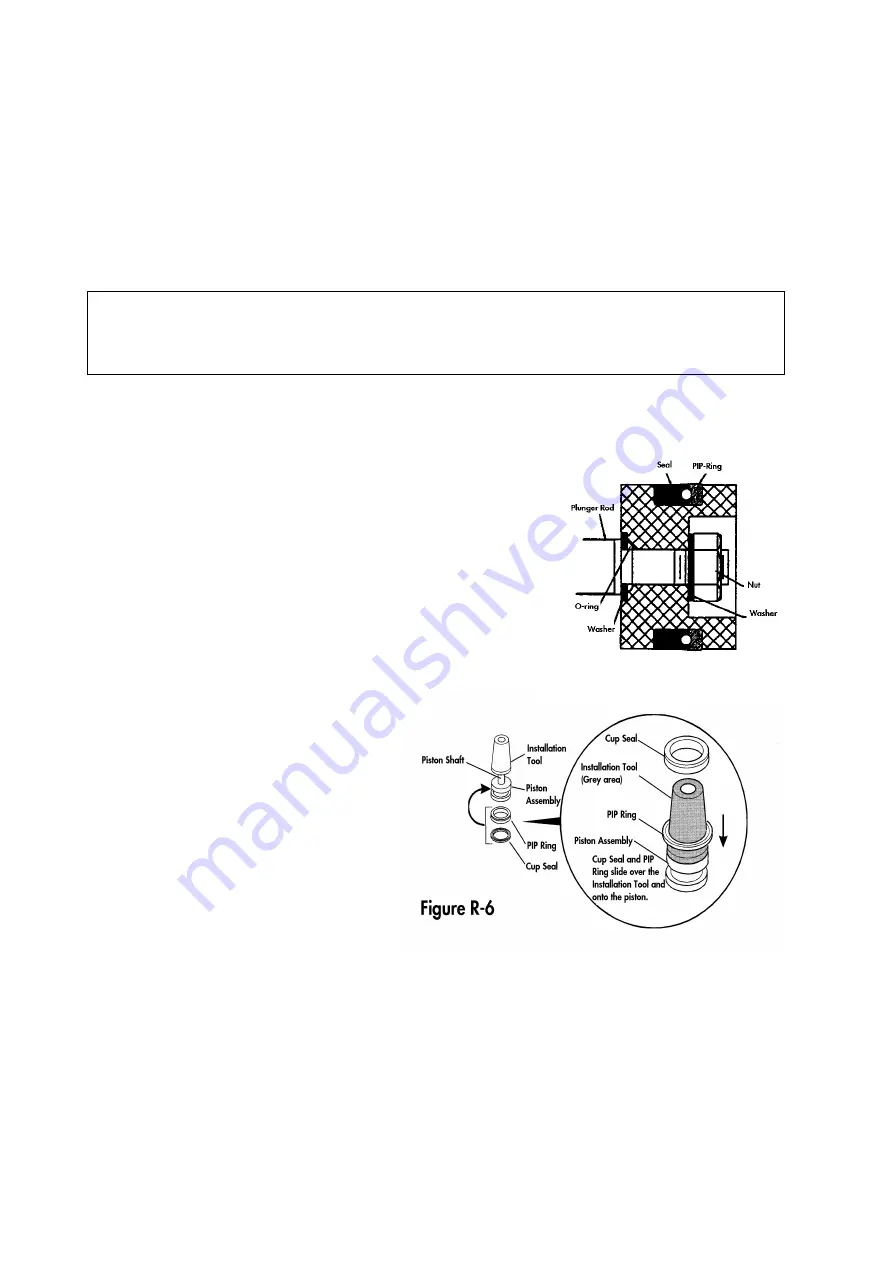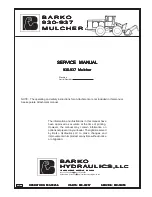
REASSEMBLY
:
Before you begin reassembly of the watermaker, clean all parts using clean, lint-free rags. At this time, all parts
should be carefully inspected for wear or damage. Use a 10x magnifier or loupe to examine the seals, O-rings,
and other small parts. Stubborn rust stains and other deposits on metal parts can be cleaned with a soft-metal
wire brush (e.g., stainless steel or brass). Do
not
use polishes, cleaning compounds containing abrasive materials,
or regular steel wire brushes. During reassembly, refer to
Figures A-3
and
A-4
in the
Appendix
for full-size
drawings and identification of the components included in the Repair Seal Kit.
In the following procedure for reassembling the watermaker, it is assumed that all parts have been cleaned and
that all O-rings, seals, and mating surfaces have been lightly lubricated with non-petroleum silicon grease
(supplied with the Repair Seal Kit). References to the Repair Seal Kit will be abbreviated to “RSK.”
Warning:
Use only non-petroleum silicon grease to lubricate your watermaker. Lubricants with a petroleum
base will damage several watermaker components, including the reverse osmosis membrane. Be especially
cautious of lubricants that “contain”
Teflon, silicon, etc.
—
such products could also contain petroleum-based
components. An ample supply of silicon grease is included with each
RSK
.
1.
Make a note of the correct orientation of the old cup ring and PIP seal and then remove them from the
piston assembly. Since these components are made of rather stiff rubber, it is usually easier to cut them
off. Use a small screwdriver to wedge under the cup seal and pry it up. While holding it up, cut it with a
small pair of scissors. Repeat this process for the PIP ring.
•
Reinstall the piston:
If you want to replace the O-rings on the
piston, refer to the figure below
o
Install washer with chamfer on washer
facing ½” dia
of plunger rod and a new O-ring onto the plunger
rod, if you have an old-style piston, you only have to
install a new O-ring (8013008) into the plunger rod
without a washer.
Slide piston onto the threaded end of the plunger rod, and secure
with the washer and nut as well as one drop of Locktite.
2.
Refer to
Figure R-6
during the following procedure. Place the piston
assembly on a flat, stable surface with the shaft pointing up. Slide
the installation tool (provided in the
RSK
)
over the piston shaft with the wide end
down. Lubricate the new PIP ring, cup seal
and the installation tool with silicon grease.
With the grooved side facing up, slide the
PIP ring down the installation tool and onto
the piston. Repeat this process for the cup
seal. Note that the grooved side of the cup
seal should be facing down, i.e., the
grooved sides of the PIP ring and the cup
seal should be facing each other. When
finished with the installation, remove the
installation tool from the piston shaft.
Note:
This is a very tight fit by design and
will require a fair amount of force to push the PIP ring down the installation tool. You may use an object to
help push the pip ring evenly down the tool. Please make sure not to damage the PIP ring.





























